Family Papilionidae Genus Troides Order Butterflies and moths | Tribe Troidini Scientific name Troides minos Rank Species | |
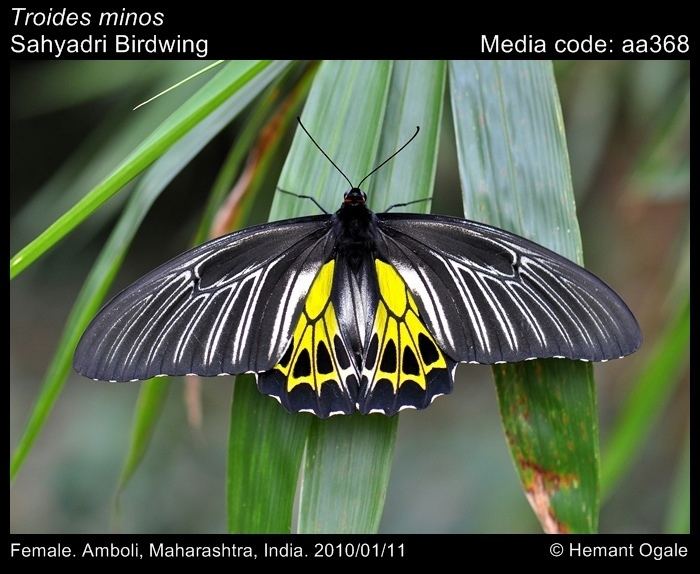 | ||
Similar Papilio polymnestor, Butterflies and moths, Troides darsius, Troides prattorum, Troides miranda | ||
Troides minos the southern birdwing male courtship
Troides minos, the southern birdwing, is a large and striking Swallowtail butterfly endemic to Peninsular India. With a wingspan of 140–190 mm, it is the largest butterfly of India.
Contents
- Troides minos the southern birdwing male courtship
- Description
- Range
- Status
- Habitat
- Habits
- Life cycle
- Eggs
- Larva
- Pupa
- Food plants
- Related species
- References
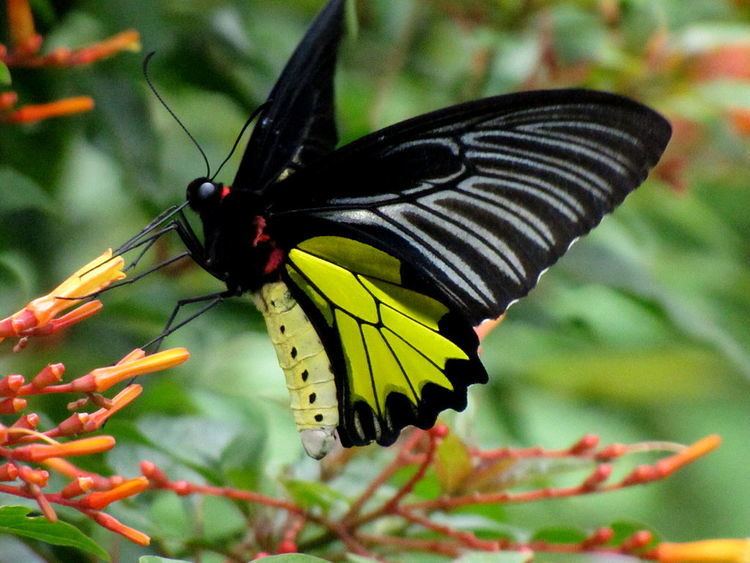
It was earlier considered a subspecies of the common birdwing (Troides helena) but is now recognised as a valid species.
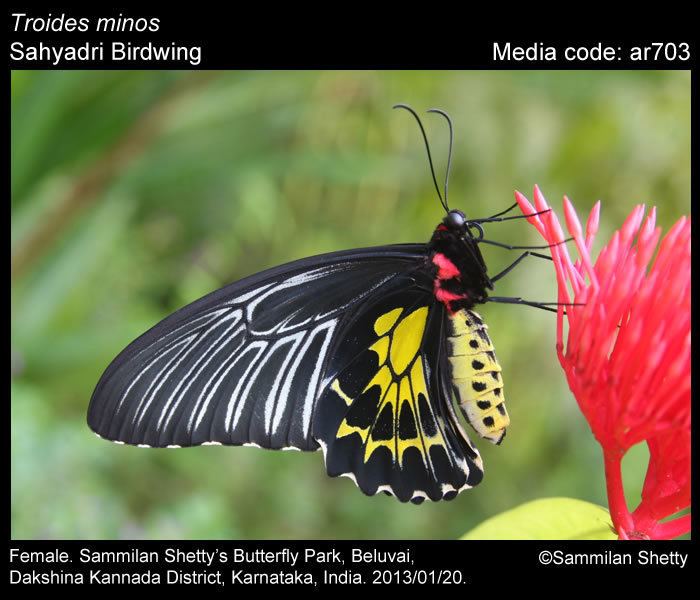
The species is more common in the Western Ghats, which is a biodiversity hotspot with a high degree of endemism in many taxa. It is much sought after by collectors and is a highlight of many butterfly tours in the Western Ghats. It is the state butterfly of Karnataka, India.
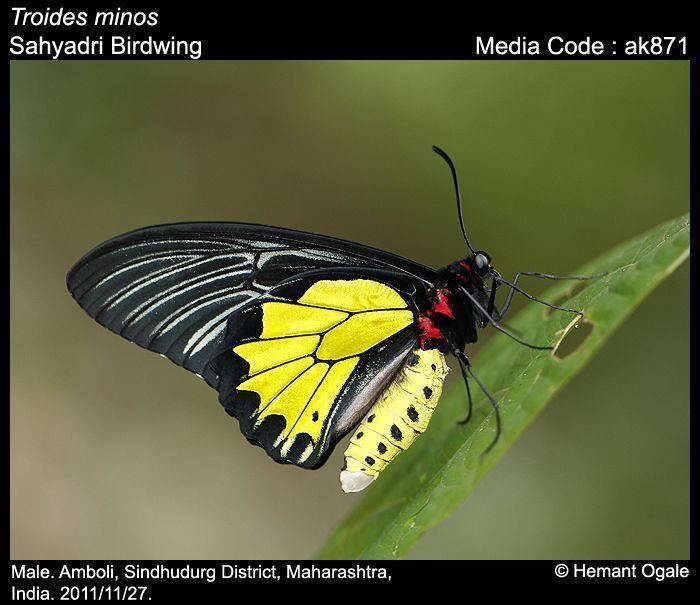
Description
For terms see External morphology of Lepidoptera.Description from Charles Thomas Bingham (1907) The Fauna of British India, Including Ceylon and Burma, Butterflies. Volume II.
Male and female. Differs from Troides helena cerberus as follows.
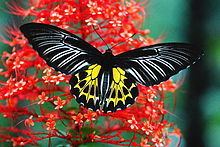
Range
Western Ghats and parts of the Eastern Ghats.
Status
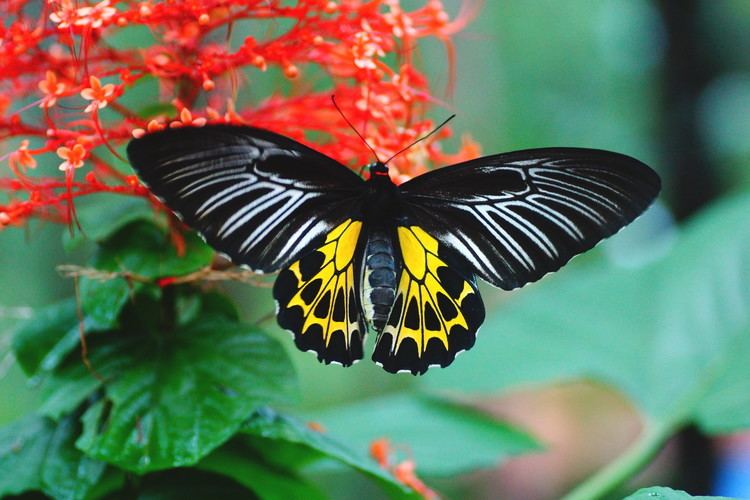
The butterfly is locally very common in the southern and central Western Ghats. Also found in southern Maharashtra and northern Goa where it is uncommon. Despite its restricted range and endemicity, the butterfly is not known to be threatened but the IUCN recommends continuous monitoring.
Habitat
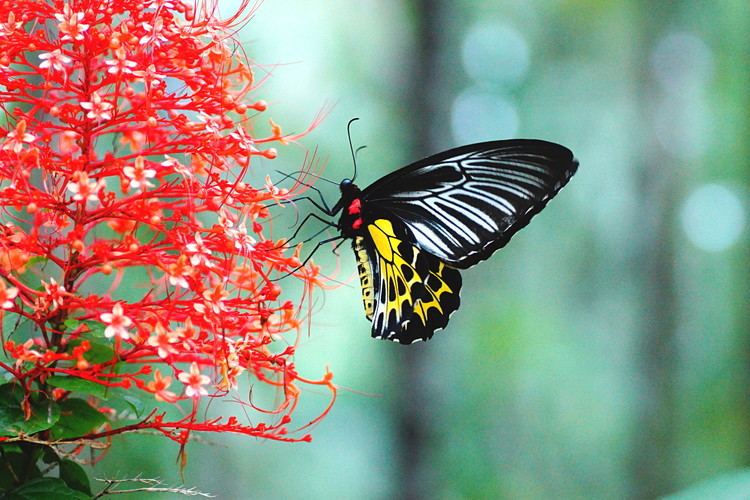
Found up to 3,000 feet (910 m) in the Western Ghats. Found in diverse habitats from low-land evergreen forests near the coast to mixed deciduous forests, dry scrub and agricultural fields.
Habits
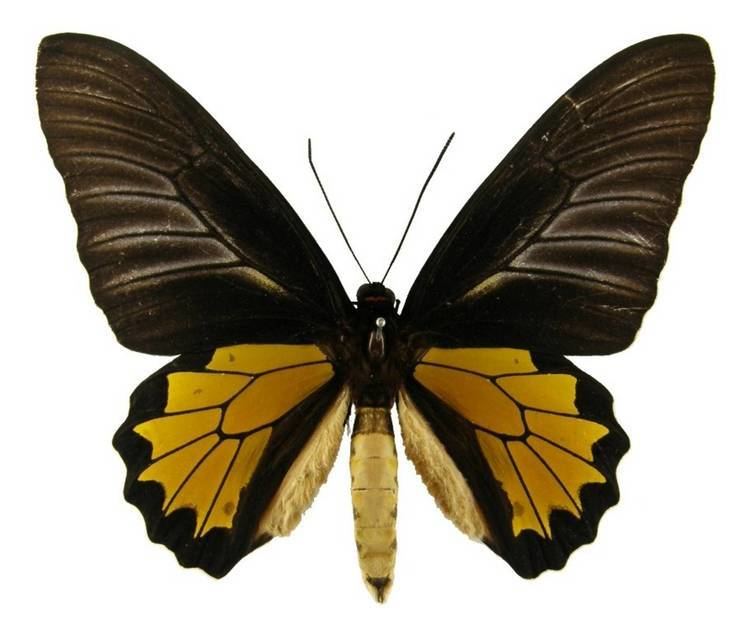
Active during early morning hours when both sexes feed in the forest on Lantana and diverse food plants. Later on, it is seen sailing as high as 30 to 40 feet (9.1 to 12.2 m) over the countryside until it descends later in the evening to feed again. It flies in a leisurely manner circling around jungle clearings and also frequents hill tops. A determined flier, it is known to cover very large distances before settling. The only food source is nectar, it also visits gardens and orchards and sips from domestic plants such as Mussaenda, Ixora and Lantana.
Life cycle
Though it flies all the year round, it is abundant in the during monsoon and post-monsoon periods.
Eggs
Spherical eggs laid singly on the edges of the undersides of young leaves and shoots.
Larva
Velvety maroon red with shiny black head and four rows of fleshy bright red tubercles. Grey markings on the back with a broad oblique pink white band on the 7th and 8th segments. These are heavily parasitised by tiny braconid wasps.
Pupa
Pale brown or green, marked with fine brown striations and minute markings. Found on the underside of leaves. If touched, it sways and makes hissing sounds.
Food plants
The larval host plants of these butterflies are small creepers and climbers of the family Aristolochiaceae such as Aristolochia indica, Aristolochia tagala and Thottea siliquosa. The host plant toxins sequestered by the butterfly during its larval stage make it unpalatable to predators. Its flight and bright colouration advertise its unpalatability.
Related species
Troides minos is a member of the Troides aecus species group. The members of this clade are:
